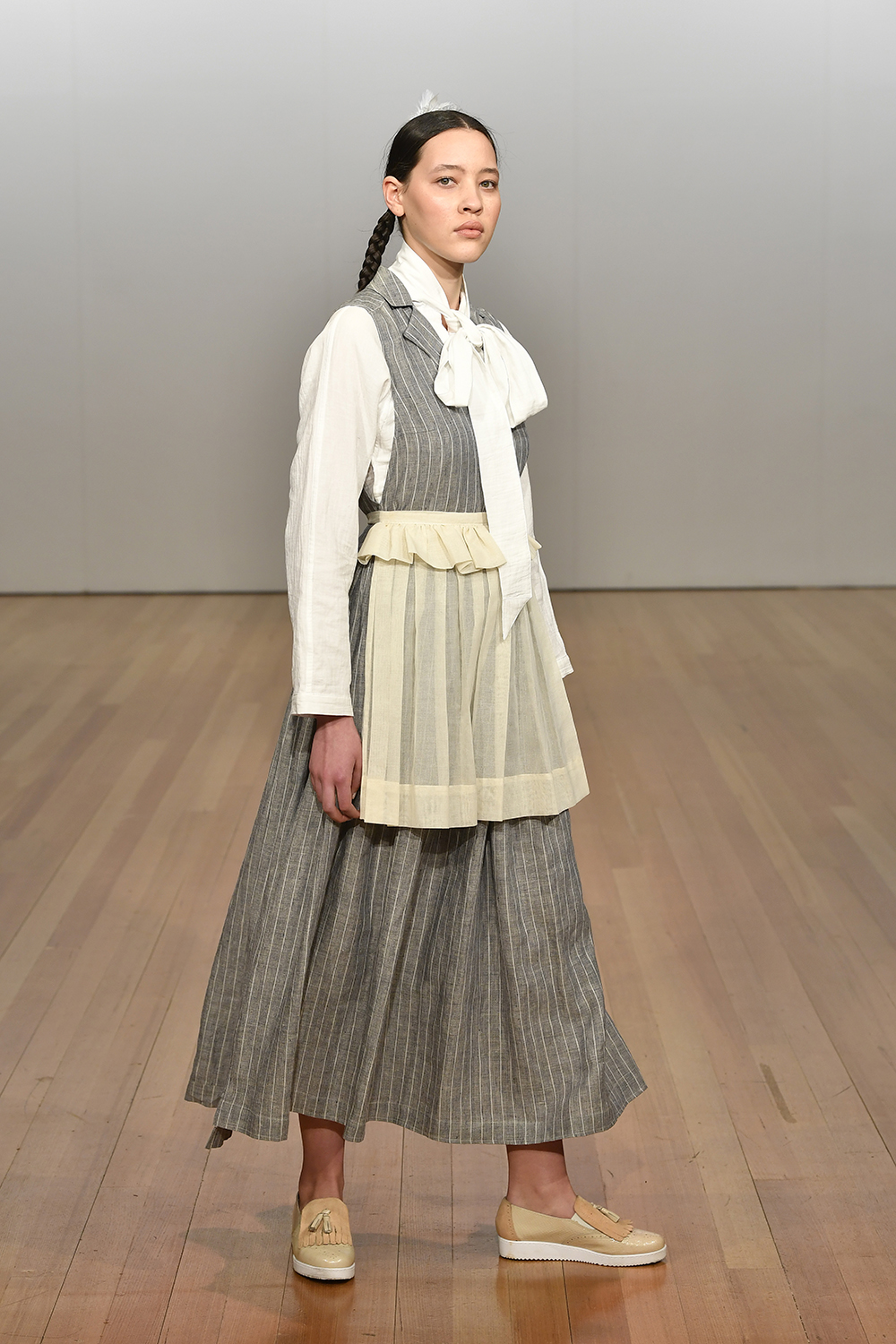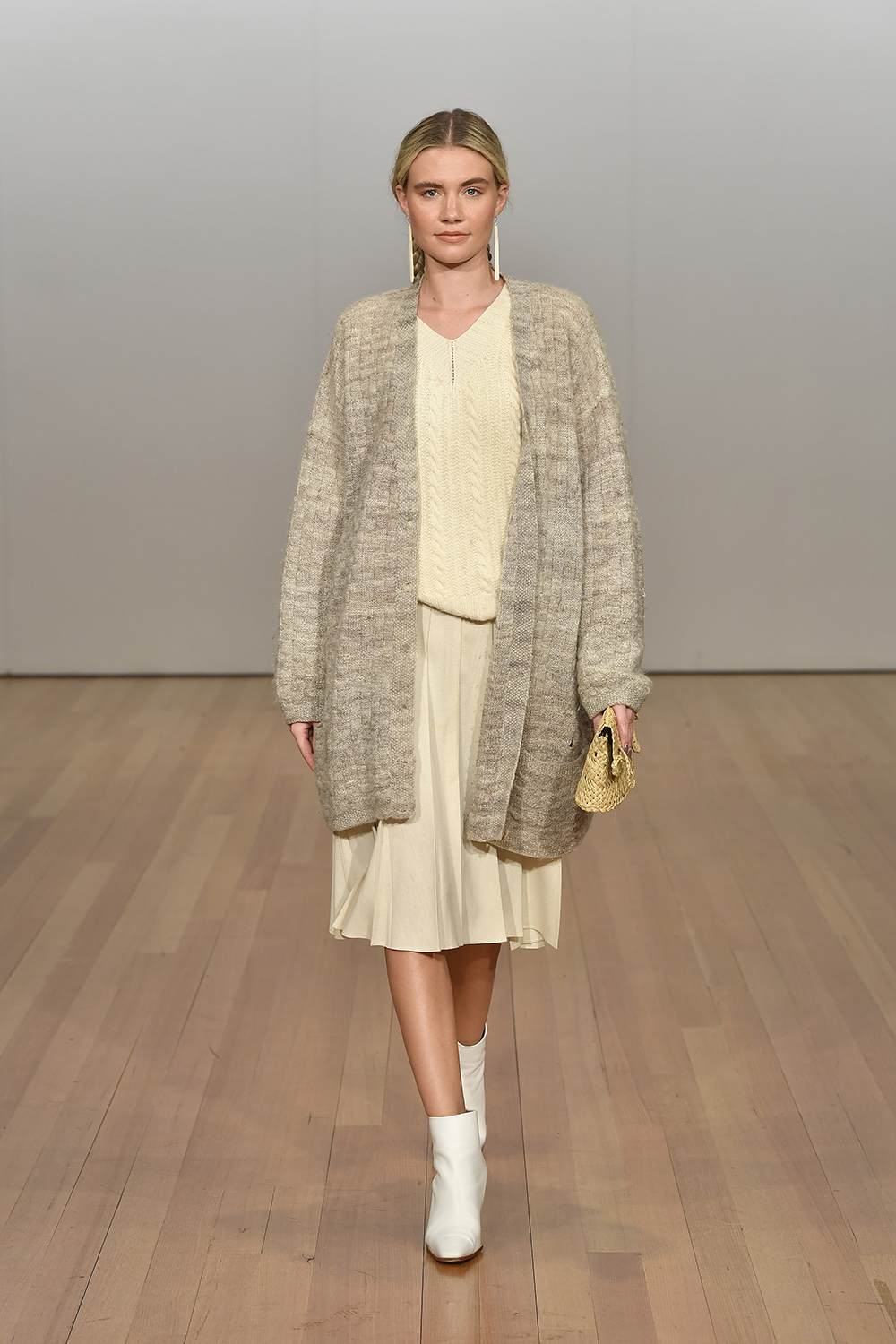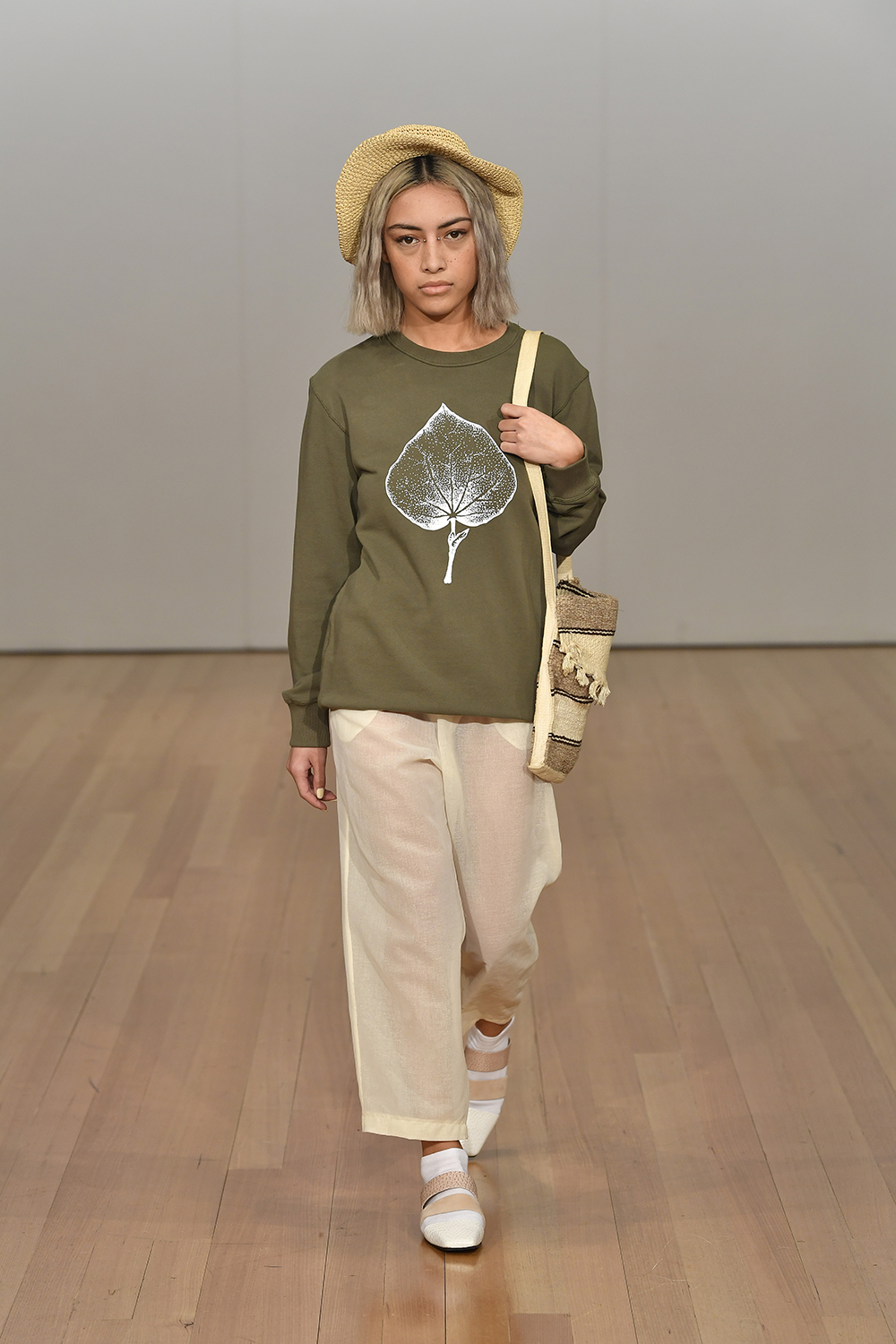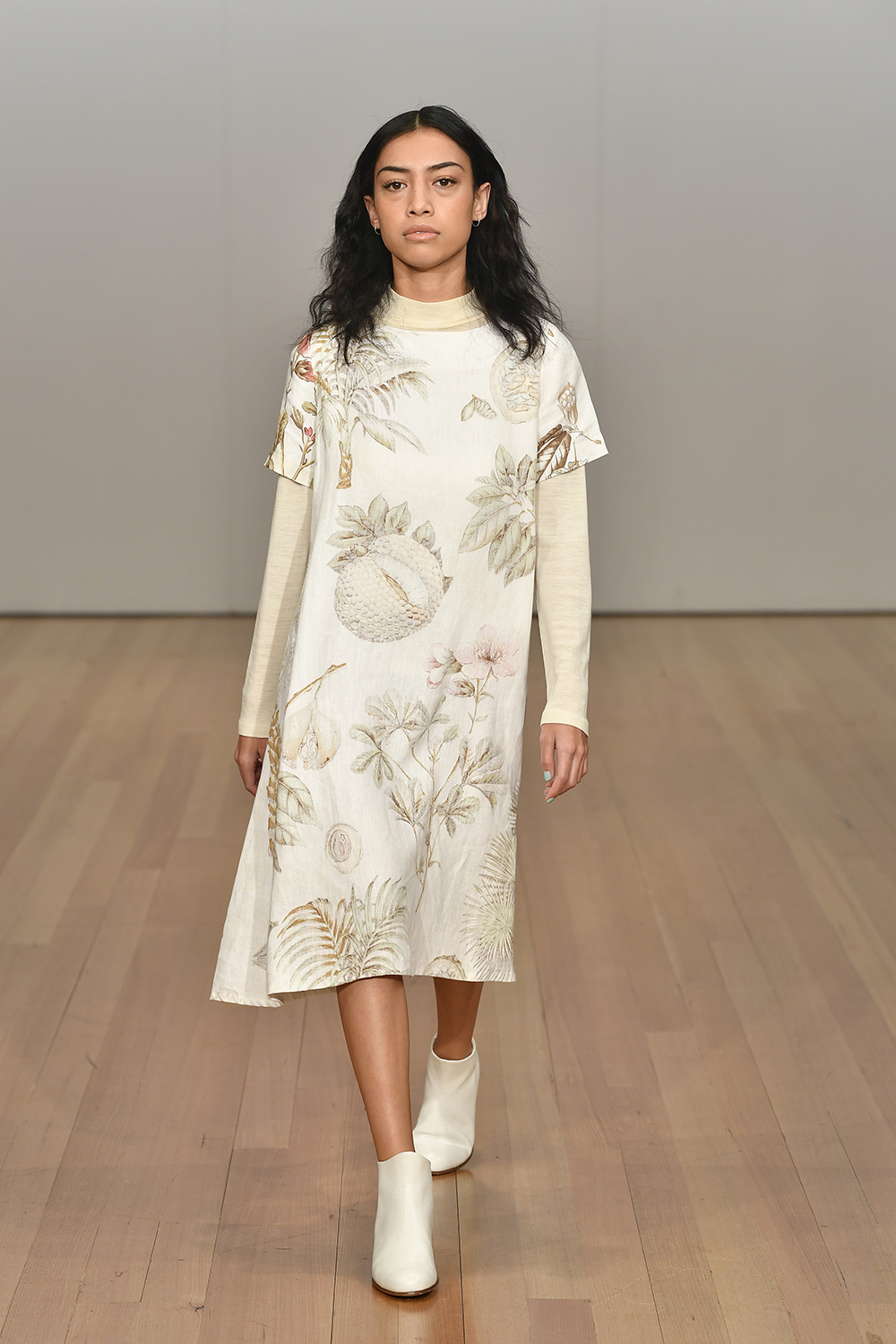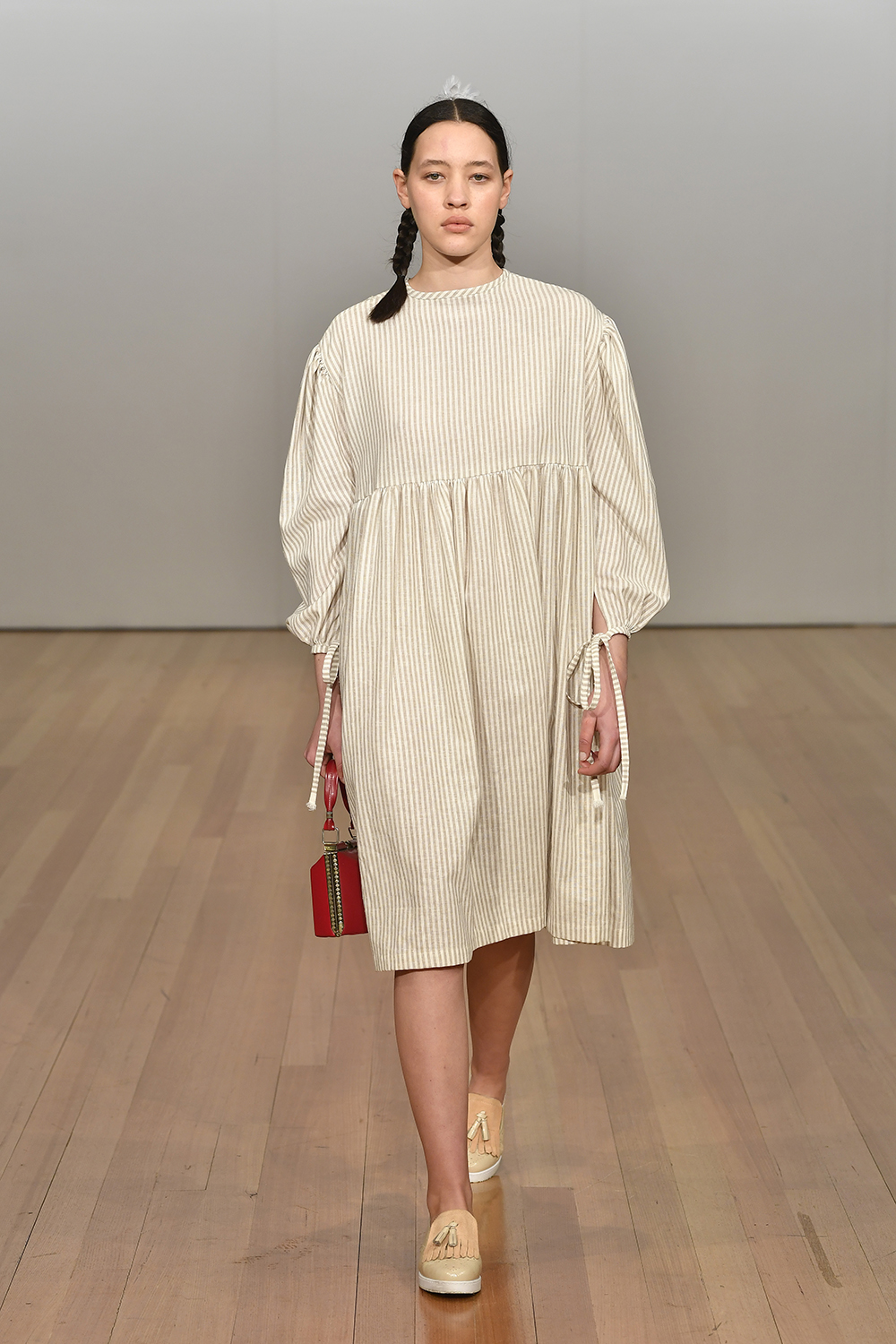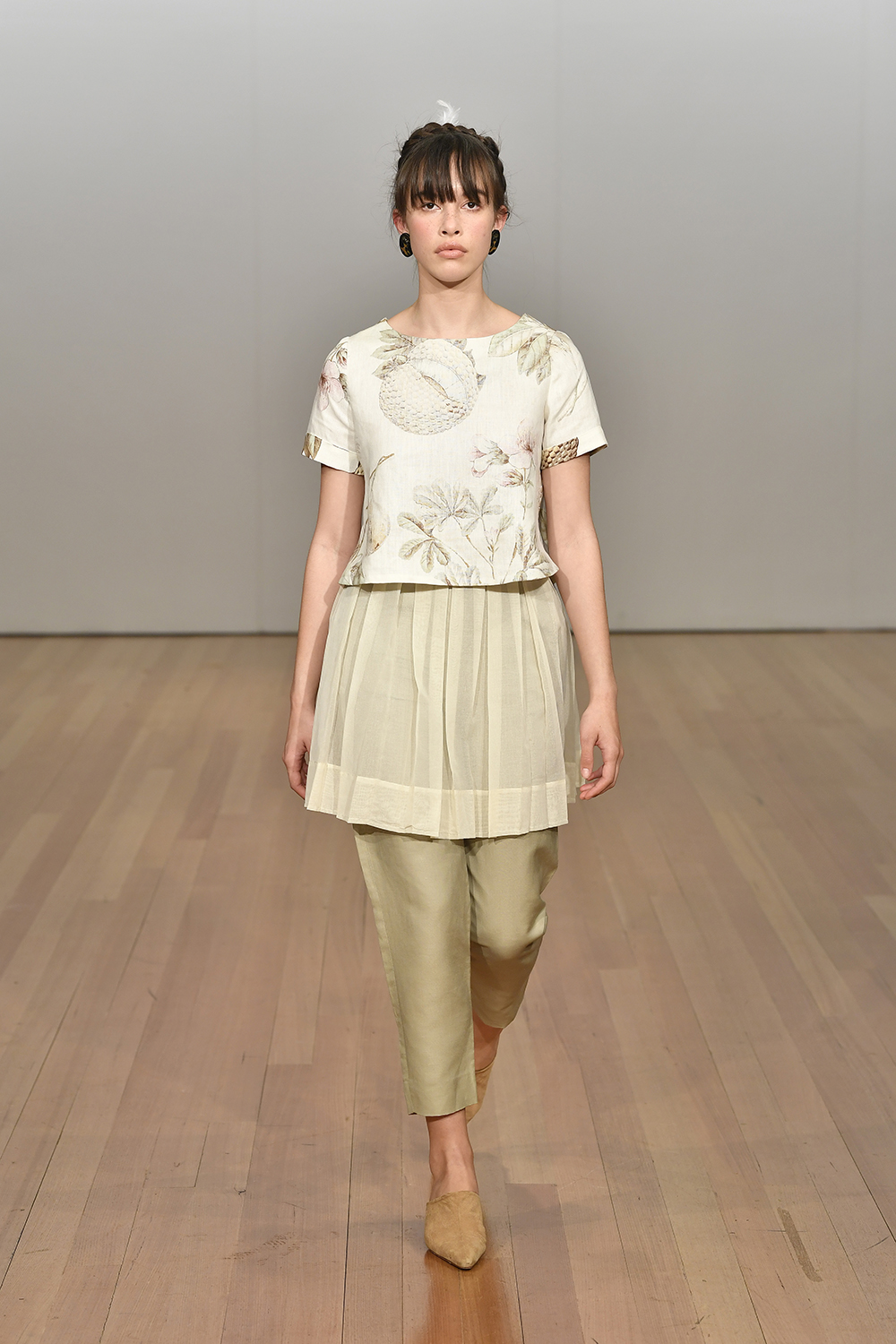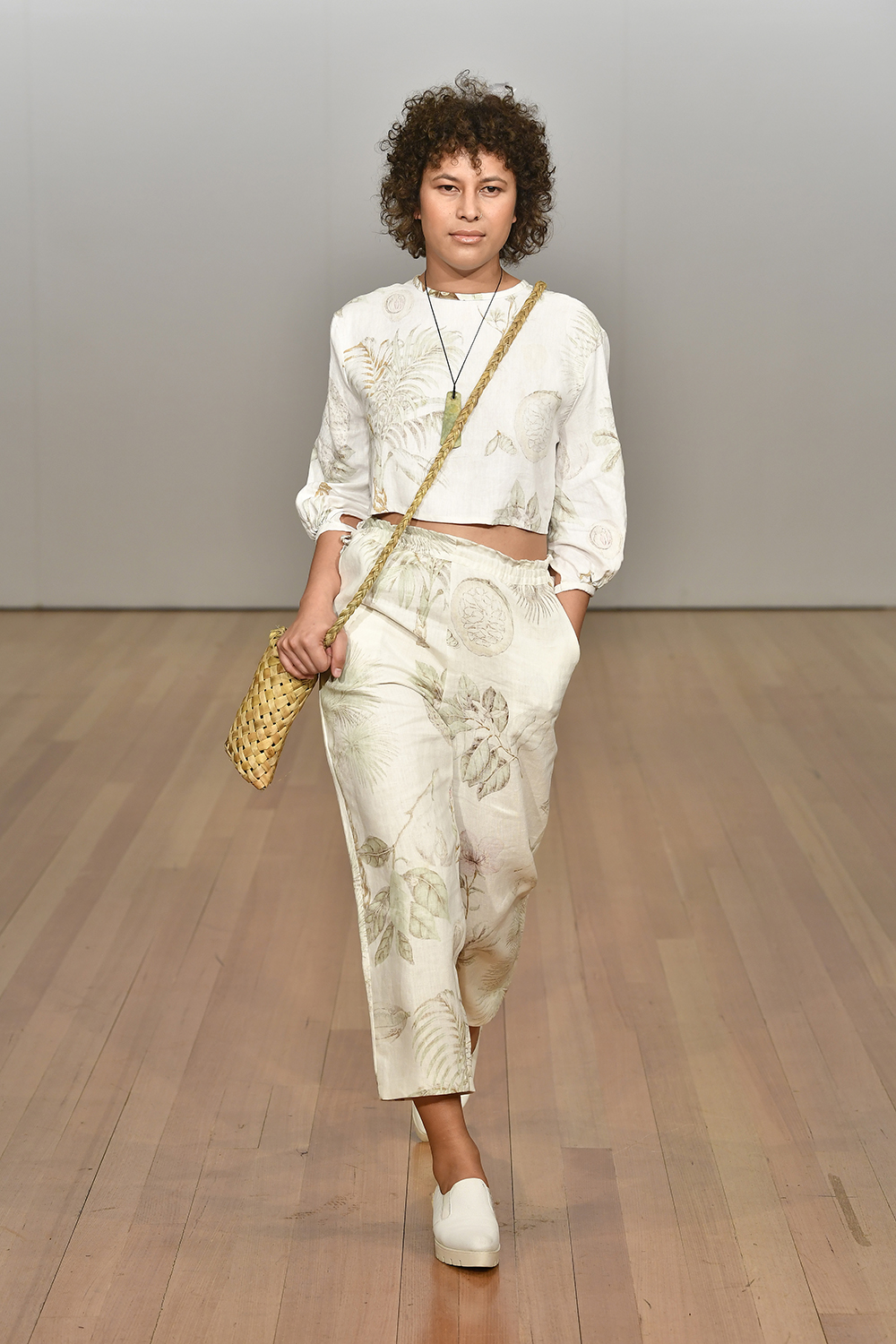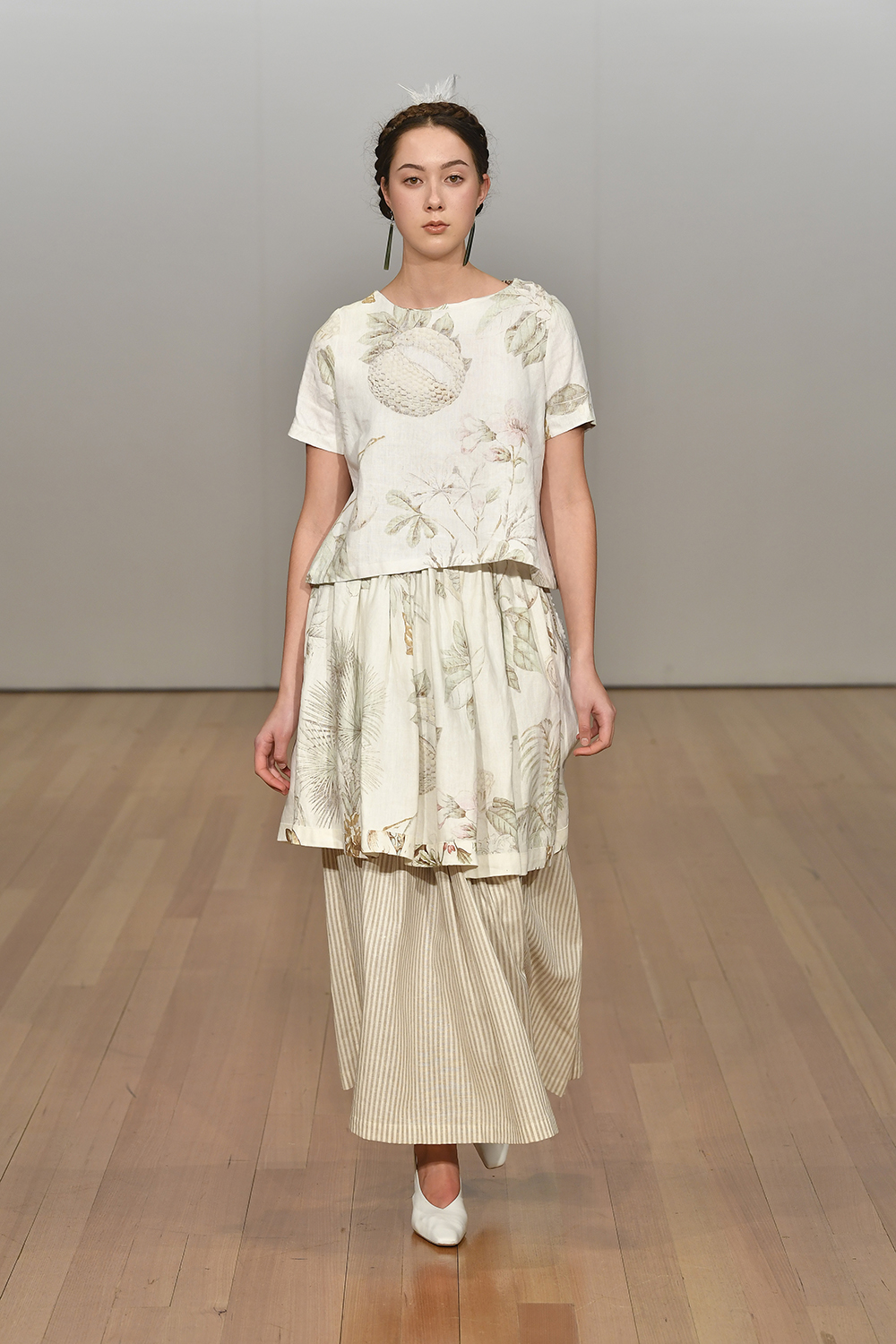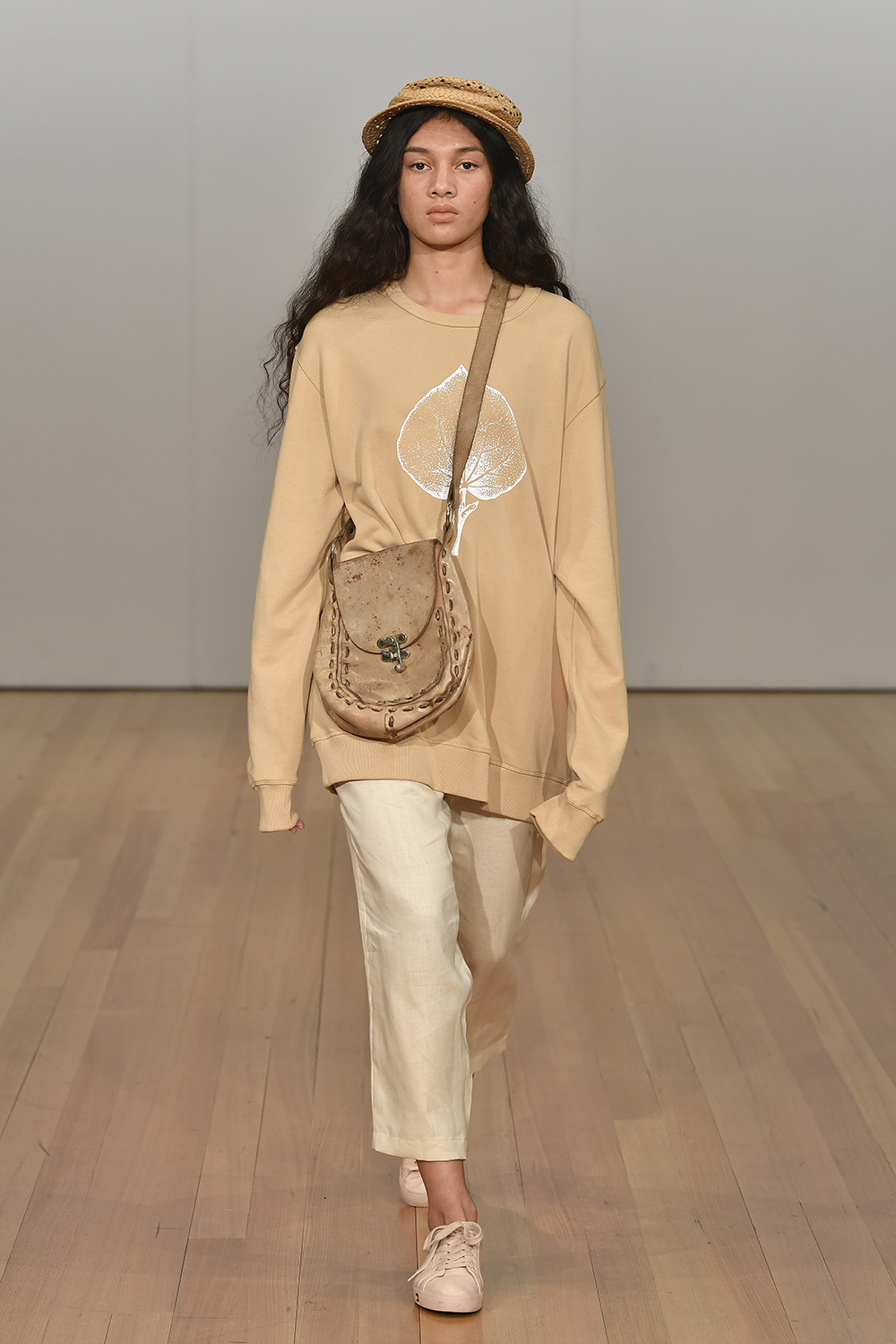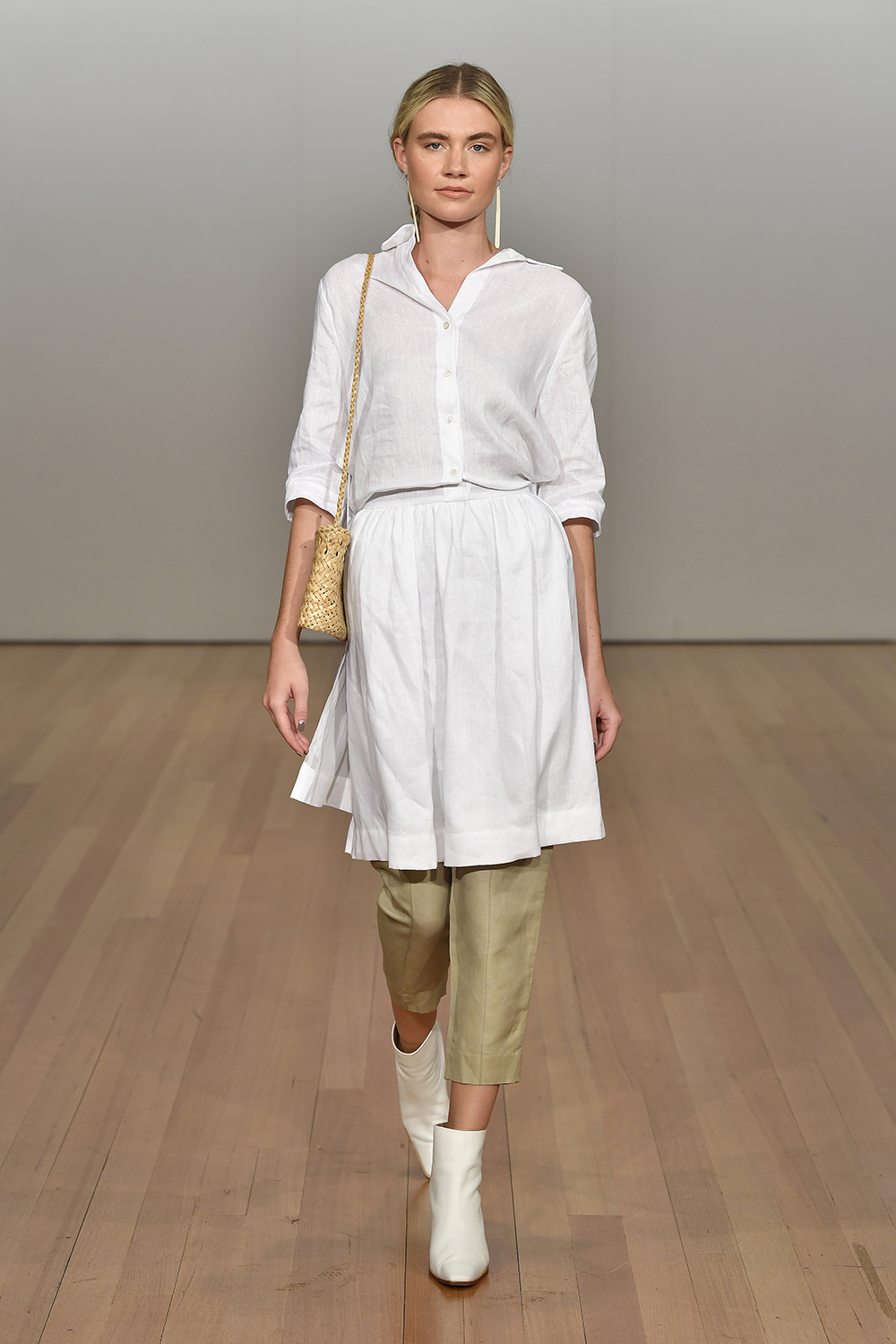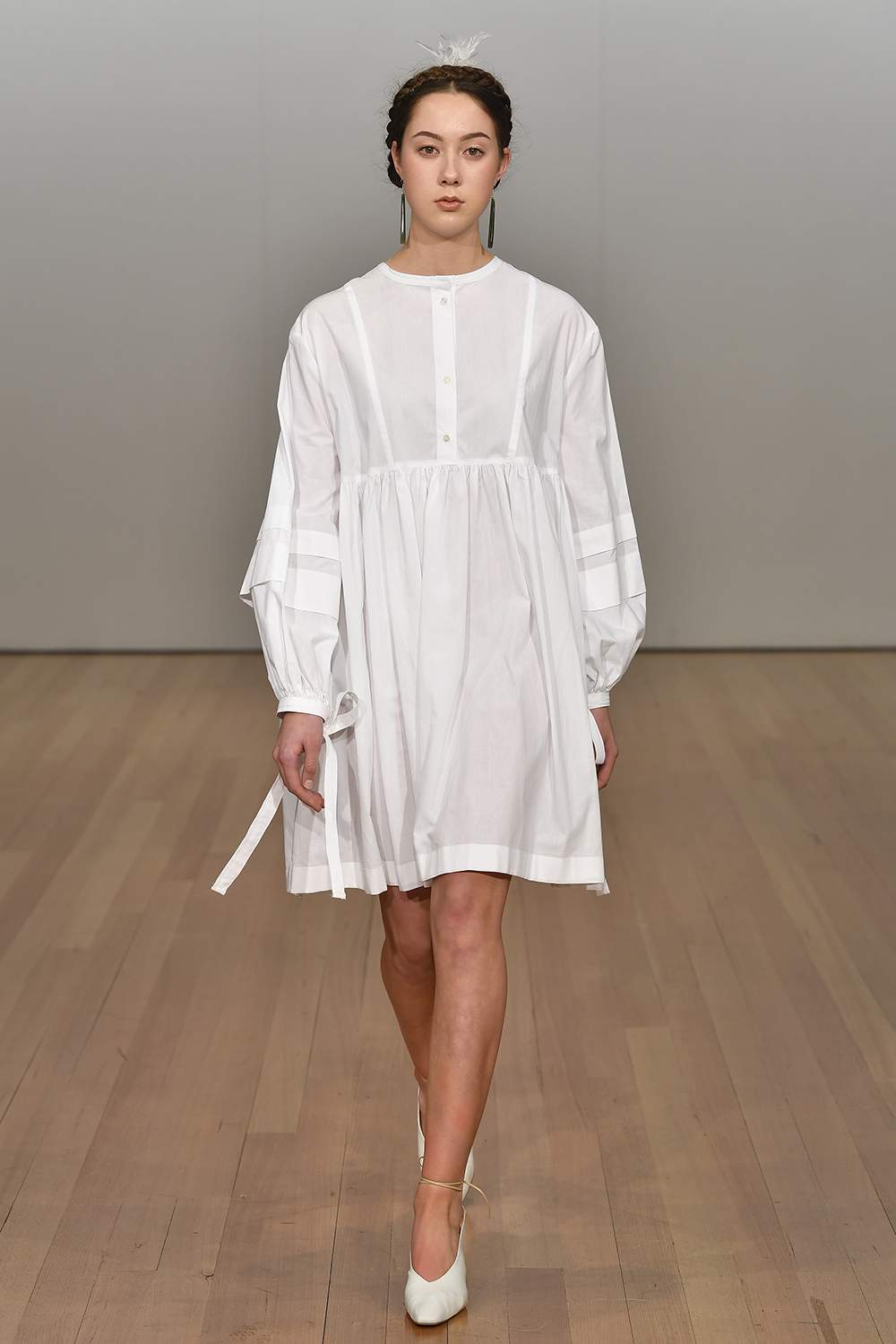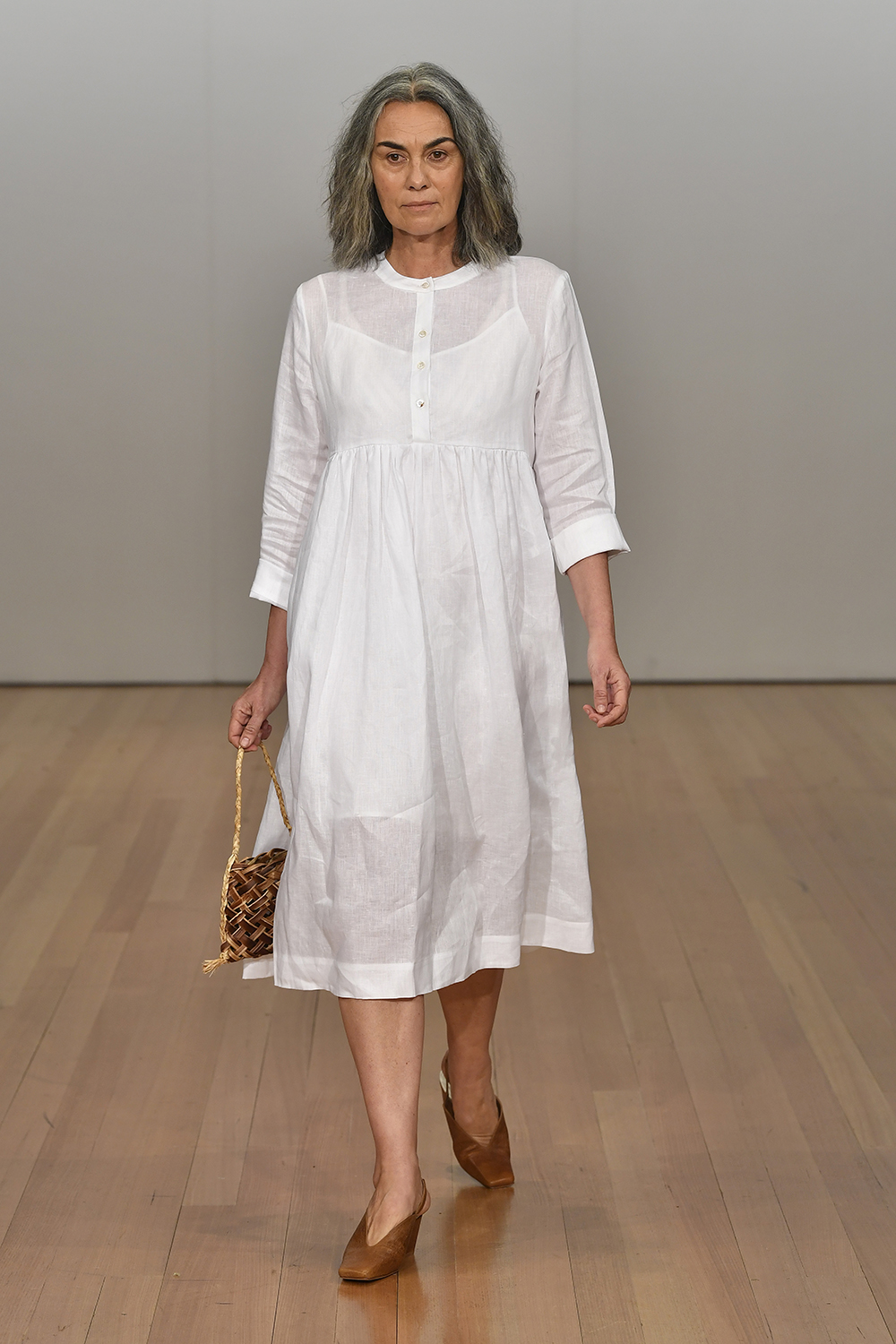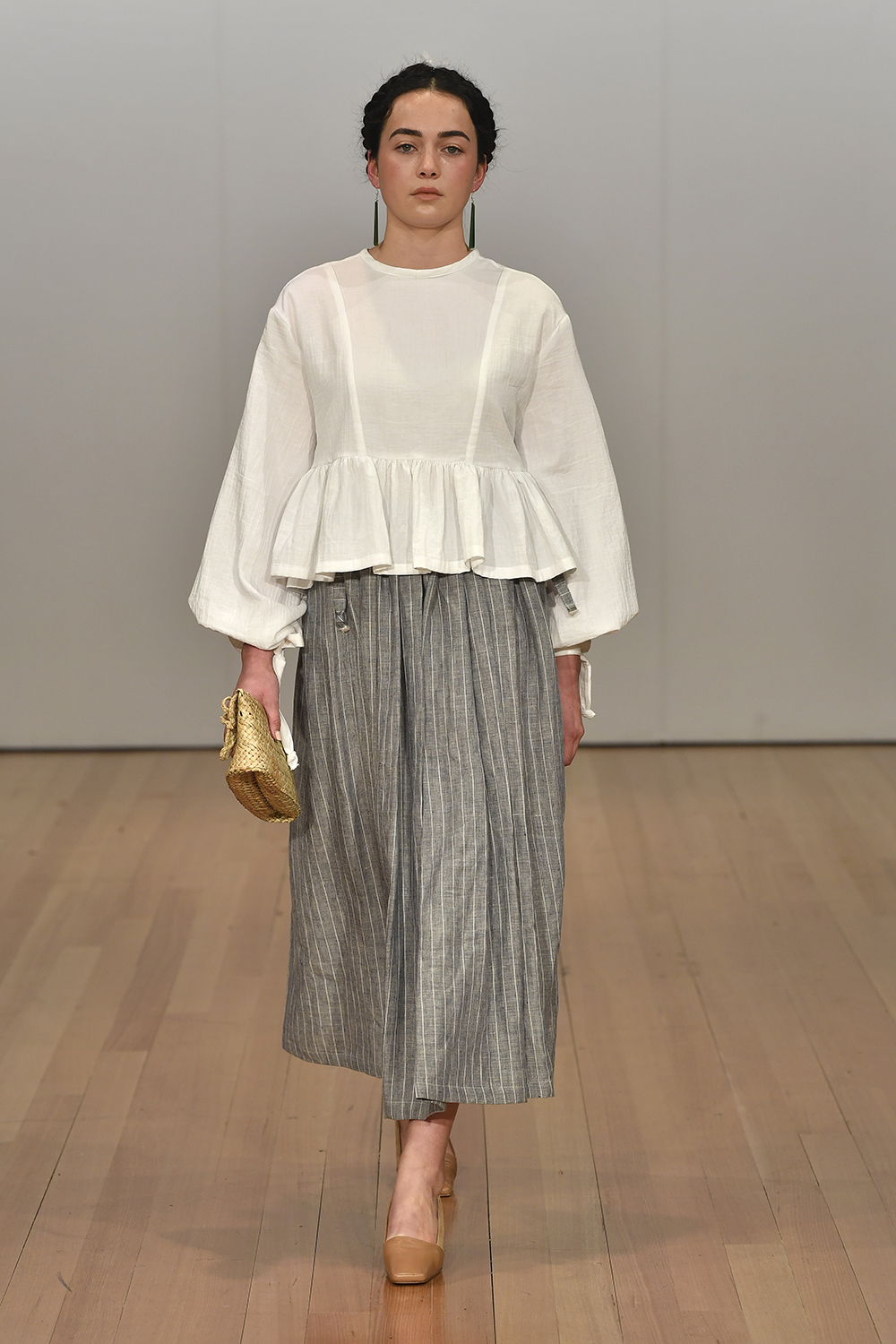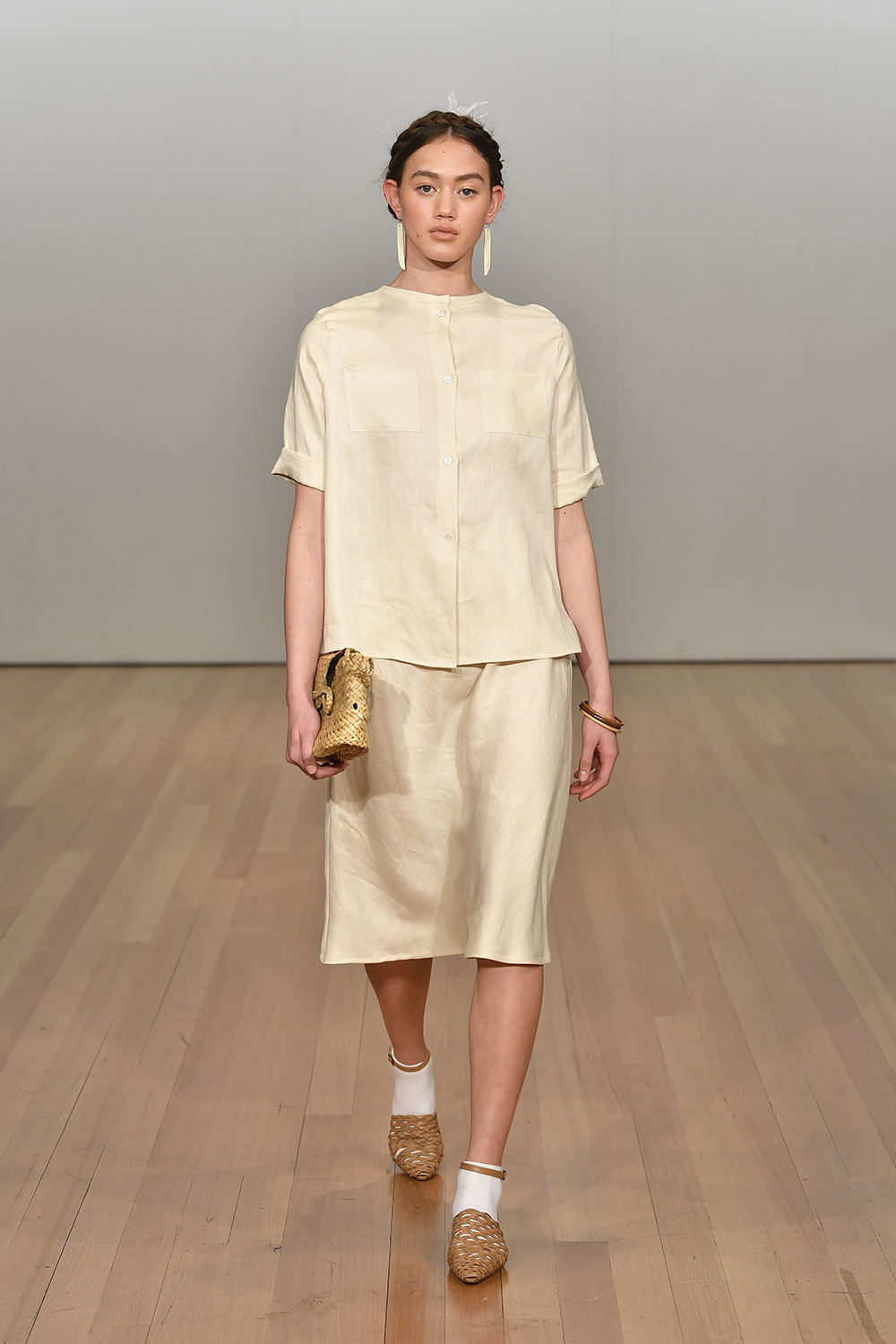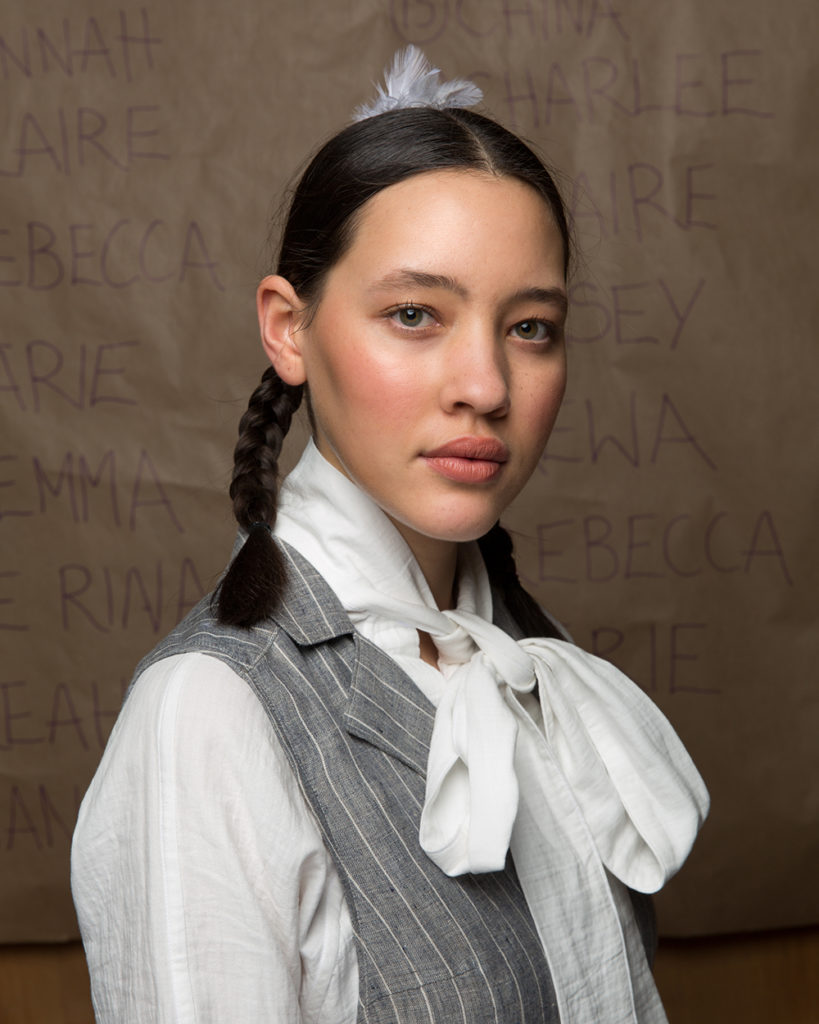
Described by many as the most moving show of NZFW, Emma Gleason caught up with the designer behind Campbell Luke to discuss the deeply personal narratives behind his work.
In a week where sustainability, diversity and identity were at the forefront of everyone’s minds, the standout Campbell Luke show in the concert chamber of Auckland Town Hall captured these sentiments in a truly authentic and personal way.
The brand’s designer, Bobby Luke (Ngāti Ruanui), is part of the fresh vanguard of labels demonstrating and exploring what fashion in Aotearoa is now, and his show was one of the most emotional things I have experienced at New Zealand Fashion Week.
With a choir in the stalls above the runway, from Te Kura Kaupapa Māori o Hoani Waititi Marae, models walked the catwalk in a collection that incorporated high collars, ruffles and aprons, alongside contemporary design elements, and accessories that included kete and hats woven from harakeke by Keita Tuhi (Ngāti Kahungunu).
The show finished with a performance echoing the historic portraiture of Māori, featuring a hundred-year-old whāriki (mat) that is a taonga (treasure) from the designer’s marae; followed by a standing ovation, with much of the audience weeping as Bobby hugged his mother Alison Luke seated proudly front row.
Fellow designer Te Orihau Karaitiana and other members of the audience and the kura performed Tika Tonu, a haka tautoko (haka of support).

The collection is entitled Whiri Papa, which translates to three threads bound as one, and it was inspired by the narratives of past, present and future, and their relationship to the knowledge carried and shared by the wahine in Bobby’s life.
Backstage after the show, he explained how the kitchen was a formative place for him growing up: the domain of women, it was where they nurtured and educated the next generation.
Whiri Papa also draws from the legacy of Parihaka, and Bobby also explained why it’s so important to him to explore Māori identity, culture and history through his work. “It’s my responsibility to hold the mana (strength) of my people.”
The effects of colonial actions and the process of decolonisation underpin all of Bobby’s work.
“The collection draws from colonial silhouettes, something that has always attracted me as a designer. At the time of New Zealand being colonised, Māori were incredible adaptors – in good cases and in bad cases. My tīpuna (ancestors) Tohu Kākahi and Te Whiti o Rongomai during this time sought to work alongside Pākehā and not against them, which still had an incredibly sad and destructive outcome that has left so much trauma – not just as a country but throughout the whole of Te Moana-Nui-A-kiwa (the Pacific Ocean).
“The outcome of the narratives that discuss this are subtle references of the time from the silhouettes in the collection – direct aspects such as high collars, ruffles, puffy sleeves, all inspired by colonial photos of Māori women during the 1800s.”
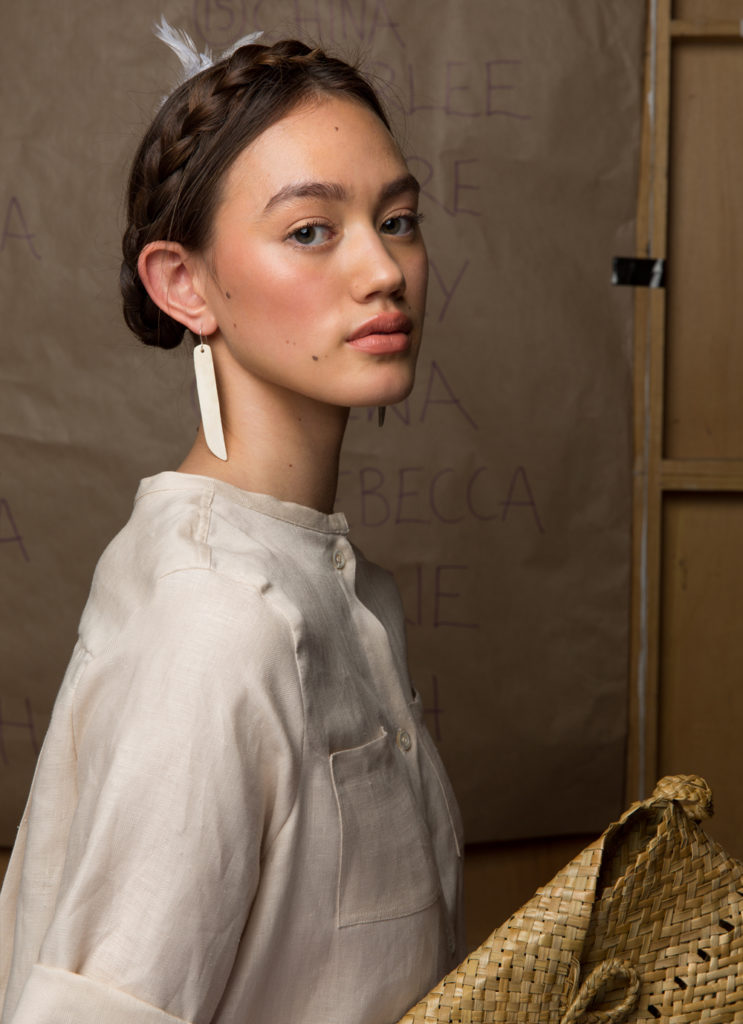
Currently studying his PhD at Auckland University of Technology, Bobby is exploring the decolonising of design methodologies through re-representations of taonga, and agrees that the effects of colonisation are a dialogue that needs further work within the industry.
“This is definitely a topic of discussion that needs to be hashed out within fashion. Clothing is an incredibly westernised subject… but something is happening now in terms of a shift towards holistic ways of thinking.”
Sustainability in the environmental and social spheres was also incorporated in the show. The collection itself is made almost entirely from linen; a natural and biodegradable fibre, linen crops requires less water than cotton, and it is the closest textile to harakeke.
Bobby has previously explored other sustainable methods, such as repatriating homeware such as bedspreads for his garments, and for this collection he included a knitted outfit with pieces originally made by family members in the ’40s and ’50s.
Social sustainability is equally a key focus of the range. “The collection is endowed with aspects of kaimahi – the worker, supporter, the foundations, the people in the background – it opens a discussion of paying attention to these people and really acknowledging them. In my case this was my mum, who was the subject of the three narratives in the film we also showed.”
He also reiterates the importance of fostering and supporting a ‘Fashion Whakapapa’ with his work – “whether it’s a seamstress, pattern maker or even someone like my niece sewing on a button, they are important and it’s our responsibility as a brand and as a people that we acknowledge them”.
These varied, deeply interlinked ideas all help contextualise the ground-breaking and personal show, and give weight to the reception it received from attendees and public alike – something that came as a surprise to Bobby.
“It was totally not expected at all – when the show started, we were scared that nobody would turn up. The influx of support has been amazing! The supportive messages from young Māori who want to be in the same position we are in has been inspiring. I feel we have done right not only as a brand but also for our culture.”

Where does a young designer go after such a phenomenal solo show? For Bobby moving forward hinges on economic success in the retail market.
“Our next approach is sustaining it and making a living. It’s okay for us to discuss our concepts and our culture through the presentation, but it’s also important for us to become a successful business, to continue sharing and telling our stories, to inspire those who are up and coming, and for us to also give back to the community.”
For fans of the Campbell Luke collection there is exciting news. “We will be selling for summer pre-orders soon, so keep an eye out!”
Pre-orders will be available on September 23 to October 4, when Campbell Luke launches its new website. In the meantime, follow Campbell Luke on Instagram, and scroll down to view all the looks from the show.



